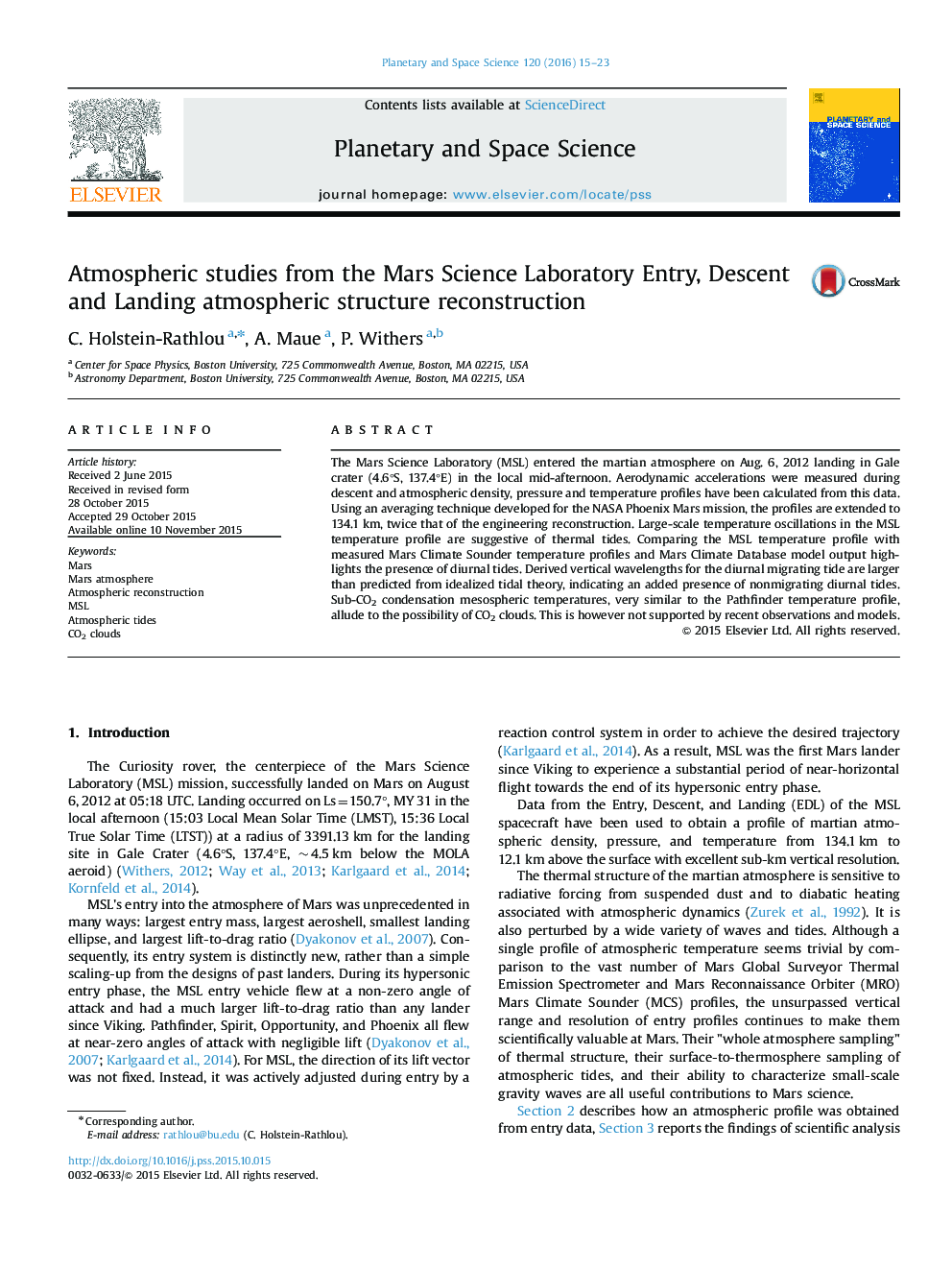| Article ID | Journal | Published Year | Pages | File Type |
|---|---|---|---|---|
| 8142864 | Planetary and Space Science | 2016 | 9 Pages |
Abstract
The Mars Science Laboratory (MSL) entered the martian atmosphere on Aug. 6, 2012 landing in Gale crater (4.6°S, 137.4°E) in the local mid-afternoon. Aerodynamic accelerations were measured during descent and atmospheric density, pressure and temperature profiles have been calculated from this data. Using an averaging technique developed for the NASA Phoenix Mars mission, the profiles are extended to 134.1 km, twice that of the engineering reconstruction. Large-scale temperature oscillations in the MSL temperature profile are suggestive of thermal tides. Comparing the MSL temperature profile with measured Mars Climate Sounder temperature profiles and Mars Climate Database model output highlights the presence of diurnal tides. Derived vertical wavelengths for the diurnal migrating tide are larger than predicted from idealized tidal theory, indicating an added presence of nonmigrating diurnal tides. Sub-CO2 condensation mesospheric temperatures, very similar to the Pathfinder temperature profile, allude to the possibility of CO2 clouds. This is however not supported by recent observations and models.
Related Topics
Physical Sciences and Engineering
Earth and Planetary Sciences
Geophysics
Authors
C. Holstein-Rathlou, A. Maue, P. Withers,
